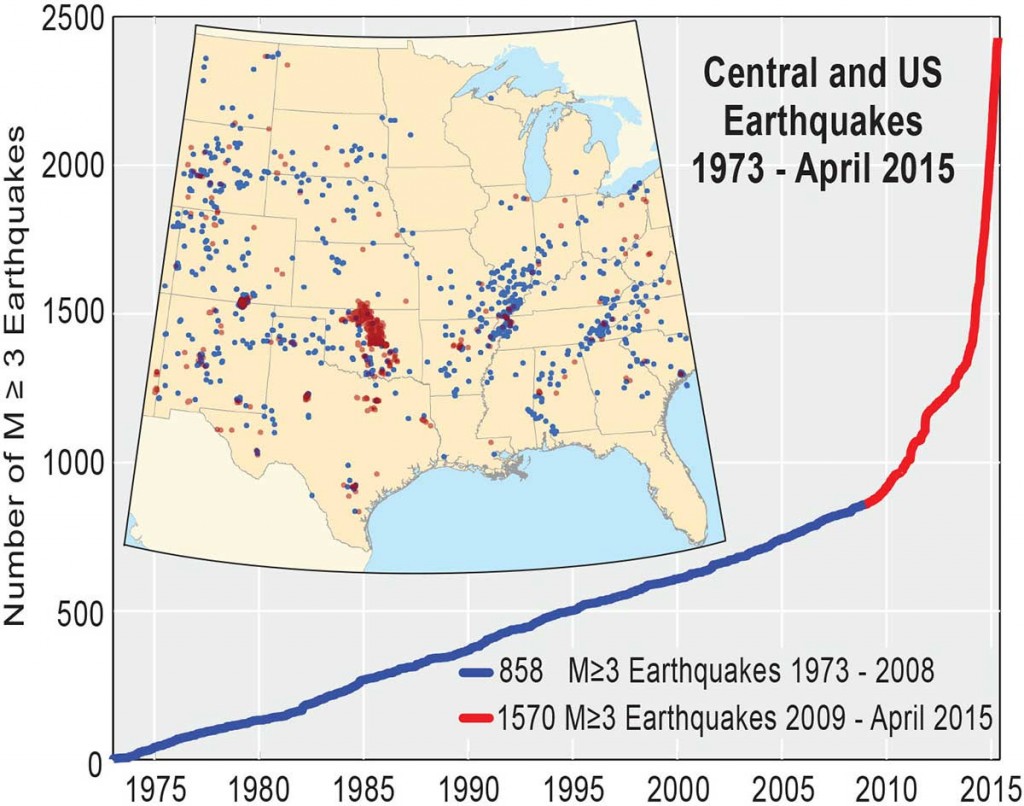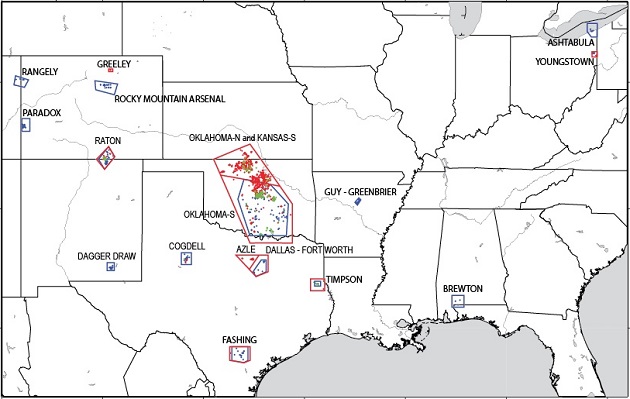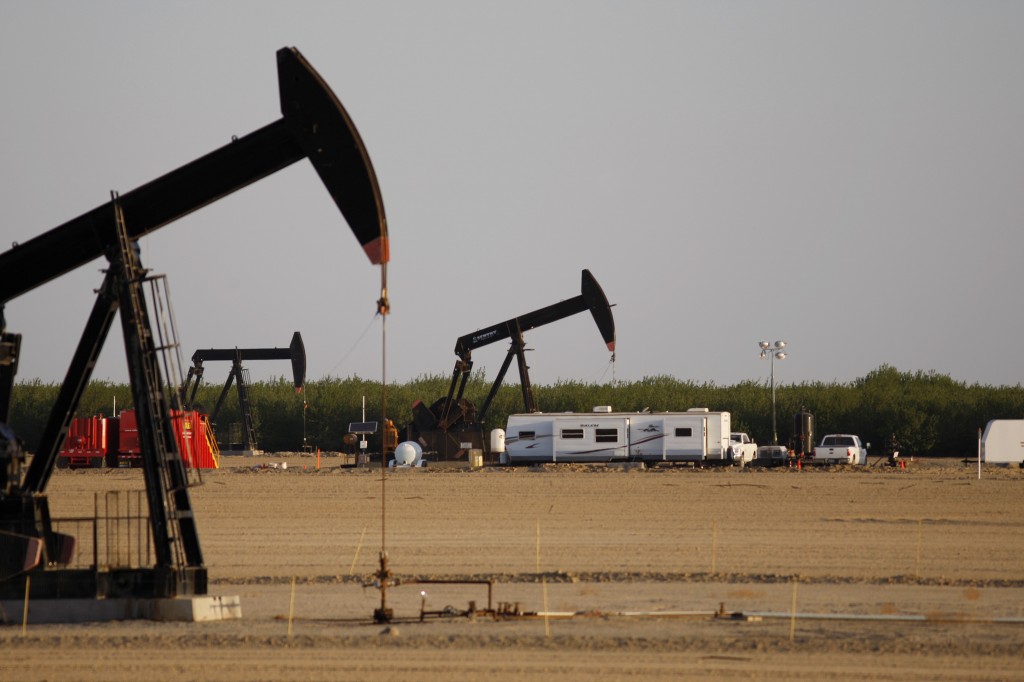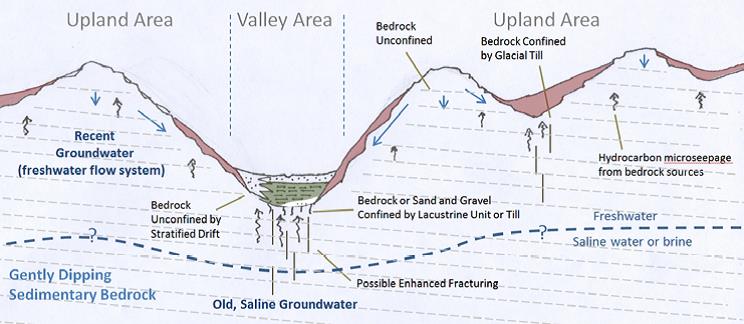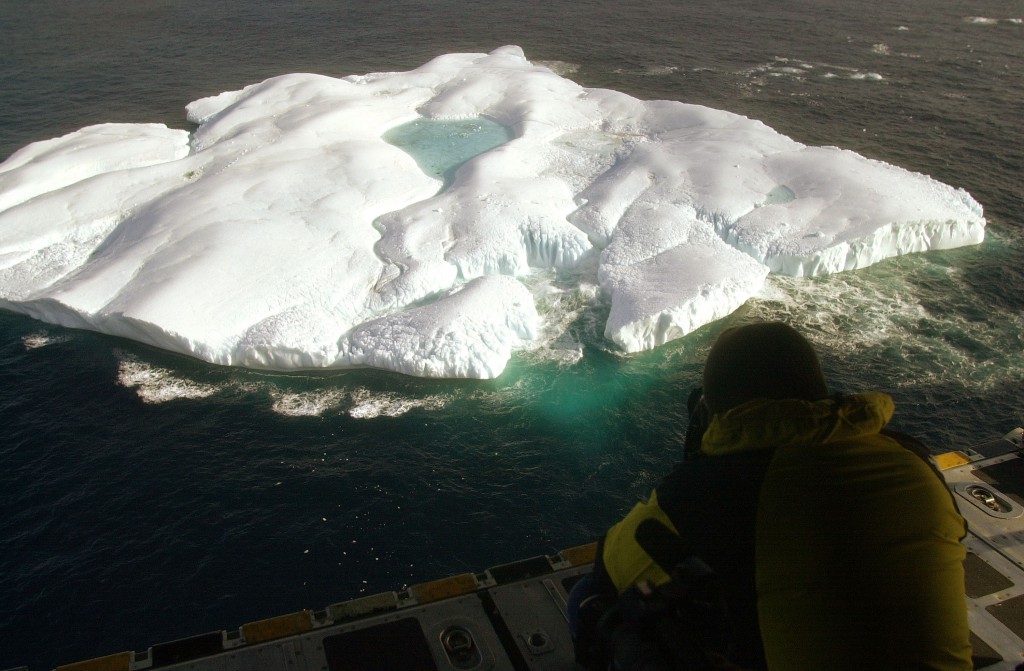The central United States has undergone a dramatic increase in seismicity over the past 6 years. From 1973-2008, there was an average of 24 earthquakes of magnitude 3 and larger per year. From 2009-2014, the rate steadily increased, averaging 193 per year and peaking in 2014 with 688 earthquakes. So far in 2015, there have… Keep reading →
USGS
Sign up and get Breaking Energy news in your inbox.
We will never sell or share your information without your consent. See our privacy policy.As if being in the middle of Tornado Alley wasn’t enough, Oklahoma is now at the heart of Earthquake Country. “The earthquake rate in Oklahoma has increased so significantly that it raises the risk of a larger damaging earthquake….Oklahomans should be concerned about this increased risk.” — William Leith, senior science advisor for earthquake hazards… Keep reading →
North Carolina Enacts Law Allowing Hydraulic Fracturing
By EnerKnol ResearchThe North Carolina Governor has signed the 2014 Energy Modernization Act, which lifts a 2012 ban on hydraulic fracturing in the state. On June 4, 2014, North Carolina Governor Pat McCrory signed the Energy Modernization Act of 2014 (SB 786) into law, allowing oil and gas extraction using hydraulic fracturing and horizontal drilling methods. The… Keep reading →
Although debunked for having nothing to do with natural gas development or hydraulic fracturing, anyone familiar with the internet has likely seen the now-famous clip of someone lighting tap water on fire in the activist documentary Gasland. In an effort to obtain baseline drinking water data in New York’s portion of the Marcellus Shale… Keep reading →
The US is the only country with an Arctic coastline that has not yet ratified the Law of the Sea Treaty, which could put it at a disadvantage in laying claim to what could be substantial resources on its outer continental shelf. The Law of the Sea Treaty – or more formally, the United Nations… Keep reading →

In the excitement of saving the environment with clean energy, we seem to have forgotten the wildlife that also have a stake in a thriving habitat. Scientists at the US Geological Survey (USGS) reviewed existing scientific papers and found that there is a lack of study on the effects of large-scale solar energy developments and operations on wildlife.
USGS scientist Jeffrey Lovich and Maryville College (Tenn.) scientist Joshua Ennen did find a large amount of information in environmental compliance documents and other unpublished, non-peer-reviewed literature, but concluded that more peer-reviewed studies are necessary, particularly on desert habitat where much of the large-scale solar development is unfolding. Peer-reviewed studies are reviewed by experts in the same field of study and then published, making them a more reliable source of in-depth information. Keep reading →
